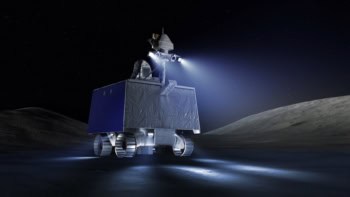
More than 500 free-floating planetary-mass objects have been discovered wandering through the Orion Nebula thanks to new observations by the James Webb Space Telescope (JWST). Most bizarrely, about 40 of these newfound objects in the nebula’s Trapezium Cluster exist in wide binary pairs, confounding expectations about how these so-called “rogue planets” form.
Free-floating planetary-mass objects that do not orbit a star have been discovered in star-forming regions before, but never in the numbers seen by the JWST’s Near-Infrared Camera (NIRCam). These objects are visible because they are still young and glowing with the heat of their formation. Over time, they will cool and fade from view.
There are two hypotheses for how such free-floating planets form. One is that they originate like stars, collapsing and condensing directly out of a star-forming molecular cloud. The other is that they form through core accretion in orbit around young stars, only to be expelled later by gravitational tidal forces and resonances.
A JuMBO mystery
For most of the 540 planetary-mass objects found in the Orion Nebula, “it’s almost certainly going to be a combination of both [processes],” says Samuel Pearson, a research fellow at the European Space Agency (ESA) and lead author of a not-yet-peer-reviewed pre-print on the new observations.
However, the 40 or so wide binaries – 9% of the total – do not fit this picture. Pearson calls them JuMBOs, for Jupiter Mass Binary Objects, and they are a mystery.
The main problem, Pearson explains, is the JuMBOs’ mass. Models predict that the minimum mass that can form directly from a molecular cloud is three times that of Jupiter. This minimum limit arises because smaller objects are better at retaining heat, which prevents them from contracting further. One might therefore expect smaller planetary-mass bodies (including the smallest object in the JWST observations, which is about 0.6 Jupiter masses) to instead have formed through core accretion – that is, from the bottom up, like Earth – and to have been ejected from their system of origin.
“But then the problem now is that we are finding them in pairs,” Pearson tells Physics World. “How on Earth does that happen?”
Planet-formation scenarios
So far, there are two options on the table. One is that the initial mass function, which describes the distribution of masses that stars are born with, extends to much smaller masses than anyone realized. The other is that these JuMBOs are somehow being ejected from planetary systems.
Though there are no firm models of how a binary pair could be ejected, one possible explanation comes from Rosalba Perna of Stony Brook University, together with Yihan Wang and Zhaohuan Zhu of the University of Nevada in Las Vegas, both in the US. In a separate pre-print, they propose a model in which two giant planets orbiting at great distance from their star can both be ejected if they happen to move into alignment at the same time as the system experiences a close encounter with a nearby star.
Perna and Wang point out that in models of planet formation, giant planets can coalesce directly out of the planet-forming disc at distances of over 50 astronomical units (that is, 50 times the Earth-Sun distance) from their star.
“In our scenario, JuMBOs prefer to form from planetary systems with two giant planets with semi-major axes close to each other,” Wang and Perna tell Physics World. “For example, if the planetary system is wide, the most likely configuration is a giant planet at ~100AU and another giant planet at 70AU.”
Pushing into a new domain
In a paper published in 2022, Aleks Scholz of the University of St Andrews, UK and colleagues predicted that the JWST would be able to detect significant numbers of low-mass rogue planets in young star clusters. Scholz says the new findings in the Orion Nebula justify this conclusion.
“These newly discovered planetary-mass objects are really exciting – they are surprisingly plentiful, and the large number of binaries is completely unexpected,” he tells Physics World. “This is what happens when you push into a new domain: you find unexpected stuff.”
For now, the onus is on getting more data. Pearson and his co-author Mark McCaughrean, who is ESA’s senior advisor for science and exploration, want to take a second look at the JuMBOs in a future study, this time using the JWST’s Near-Infrared Spectrometer (NIRSpec). These observations should confirm that they are indeed of planetary mass by providing details of their temperature, surface gravity and atmospheric composition. Beyond that, Pearson and McCaughrean plan to look for planetary-mass objects in a young star cluster, NGC 2244, which is born from the Rosette Nebula and located 5 000 light years away in the constellation Monoceros. The stars in NGC 2244 are packed less densely than those in Trapezium, Pearson says, meaning the opportunities for stellar encounters plucking planets from their orbits are slimmer.

The ten-billion-dollar gamble: Why the JWST’s delays were a boon for exoplanet science
“It’s way less likely to happen in really sparse regions, so if we suddenly stop seeing JuMBOs, that would be a smoking gun for how these are forming,” he explains.
Though little is known of these rogue planetary-mass objects, Pearson says there could be more of them in our own Milky Way galaxy than there are stars. This raises questions about how to define them: are they planets, sub-brown dwarfs or something else? Given the already blurred lines between these categories, it might not matter, and Pearson is steering clear of such discussions.
“How we try and define them is a great way to cause an argument,” he says, laughing.



